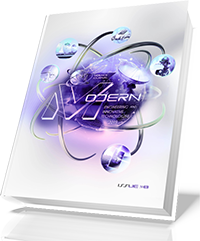GRAPH USER INTERFACES FOR ENHANCING EXPLORATORY LEARNING: AN OVERVIEW
DOI:
https://doi.org/10.30890/2567-5273.2023-29-03-047Keywords:
exploratory learning, graphs, graph user interfacesAbstract
Exploratory learning is a key methodology in education. This text highlights the role of Graph User Interfaces (Graph UI) in enhancing exploratory learning by providing interactive, graph-structured data representations. Tracing from Euler's work to moderReferences
March, J.G. (1991). Exploration and Exploitation in Organizational Learning in Organization Science, Special Issue: Organizational Learning: Papers in Honor of (and by) James G. March, issue 1, vol. 2, pp. 71-87.
Rieman, J. (1996). A Field Study of Exploratory Learning Strategies in ACM Transactions on Computer-Human Interaction, issue 3, vol. 3, pp. 191.
DOI: 10.1145/234526.234527
Fekete, J-D., Fisher, D., Nandi, A., & Sedlmair, M. (Eds.). (2019). Progressive Data Analysis and Visualization in Schloss Dagstuhl–Leibniz-Zentrum fuer Informatik, pp. 2-3.
Komorowski, M., Marshall, D.C., Salciccioli, J.D., & Crutain, Y. (2016). Exploratory Data Analysis in Secondary Analysis of Electronic Health Records, pp. 185-203.
DOI: 10.1007/978-3-319-43742-2_15
Herman, I., Melancon, G., & Marshall, M.S. (2000). Graph visualization and navigation in information visualization: A survey in IEEE Transactions on Visualization and Computer Graphics, issue 1, vol. 6, pp. 24-43.
DOI: 10.1109/2945.841119
Euler, L. (1956). The seven bridges of Königsberg in The World of Mathematics, vol. 1, pp. 573-580.
Paoletti, T. (2011). Leonard Euler’s solution to the Konigsberg bridge problem in Convergence.
Barrasa, J., Hodler, A., & Webber, J. (2021). Knowledge Graphs. O'Reilly Media, Incorporated.
di Battista, G., Eades, P., Tamassia, R., & Tollis, I.G. (1994). Algorithms for Drawing Graphs: An Annotated Bibliography in Computational Geometry: Theory and Applications, issue 5, vol. 4, pp. 235-282.
Novak, J.D., & Cañas, A.J. (2006). The theory underlying concept maps and how to construct them in Florida Institute for Human and Machine Cognition, vol. 1.1, pp. 1-31.
Ausubel, D.P. (1960). The use of advance organizers in the learning and retention of meaningful verbal material in J. Educ. Psych., issue 5, vol. 51, pp. 267-272.
DOI: 10.1037/h0046669
Tytenko, S.V. (2020). Concept Maps, Their Application Types and Methods in Information and Learning Systems in KPI Science News, no. 4, pp. 70-78.
DOI: 10.20535/kpisn.2020.4.22709
Puntambekar, S., Stylianou, A., & Hübscher, R. (2003). Improving Navigation and Learning in Hypertext Environments With Navigable Concept Maps in Human–Computer Interaction, vol. 18, no. 4, pp. 395-428.
DOI: 10.1207/s15327051hci1804_3
Chen, P., Lu, Y., Zheng, V. W., Chen, X., & Yang, B. (2018). KnowEdu: A System to Construct Knowledge Graph for Education in IEEE Access, vol. 6, pp. 31553-31563.
DOI: 10.1109/ACCESS.2018.2839607
Tytenko, S.V. (2019). Interactive concept maps in ontology-oriented information and learning web-systems in KPI Sci. News, no. 2, pp. 24-36.
DOI: 10.20535/kpi-sn.2019.2.167515
Downloads
Published
How to Cite
Issue
Section
License
Copyright (c) 2023 Authors

This work is licensed under a Creative Commons Attribution 4.0 International License.






